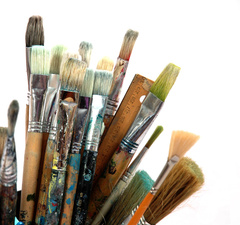--Giotto di Bondone
Giorgio Vasari, a Renaissance painter and historian, recalled how the painter Luca Signorelli advised his father.
“Antonio, have little Giorgio learn to draw at any rate so that he will not get even worse,” advised Signorelli. “This art, even if he applied himself to his literary studies, cannot fail to provide him with the same profit, honour, and delight it has provided to all worthy men.”
Then turning to the young Vasari, the old artist said, “Learn, little cousin, learn.”
As with all artists, young Renaissance painters studied technique through apprenticeships with older, experienced painters. They also learned by copying the great artists and reading a limited number of treatises written about art. For example, in the Middle Ages the monk Theophilus wrote On Divers Arts: The Foremost Medieval Treatise on Painting, Glassmaking, and Metalwork. During the Renaissance the painter Leon Battista Alberti wrote a manuscript, On Painting. As an adult, Vasari chronicled the lives of painters, sculptors, and architects, with insights to their working lives and methods.
With all the arts—painting, dancing, writing, weaving—successful practitioners begin with the basics. Devoting time and discipline to enduring techniques rewards later work. Skipping this step eventually degrades it.

 RSS Feed
RSS Feed



